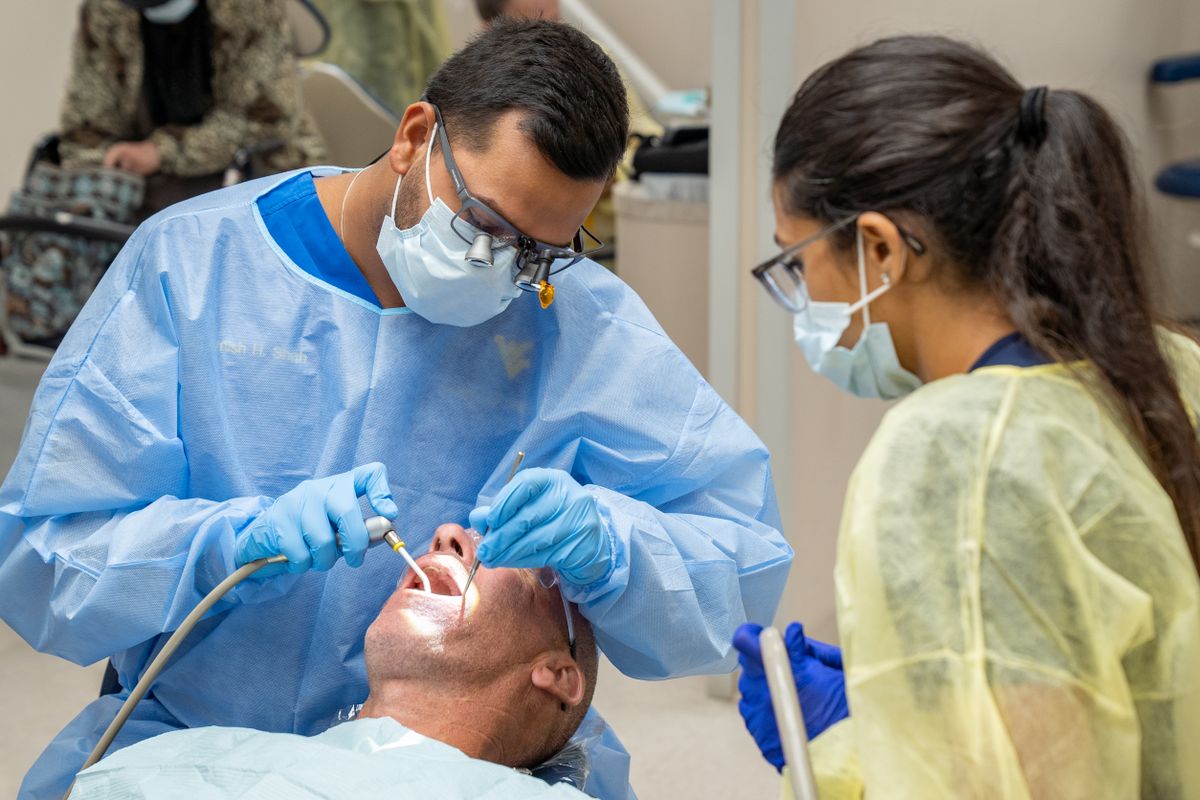Treatment of Periodontitis

Diagnosis of Periodontitis
The diagnosis of periodontitis is usually made based on a dental examination, analysis of the patient’s history, and additional diagnostic tests. Here are key steps in establishing the diagnosis of periodontitis:
- Dental Examination: The dentist will carefully examine the oral cavity, teeth, and gums. He or she will look for signs of inflammation, redness, swelling, bleeding of the gums during brushing or probing, gum recession, changes in the position of the teeth, the formation of pockets between the teeth and gums, and other characteristic signs of periodontitis.
- History Taking: The dentist will ask questions about the symptoms the patient has noticed, as well as their general oral hygiene, smoking habits, the presence of diabetes, or other systemic diseases that may affect gum health.
- Measurement of Pocket Depth: To determine the presence and severity of periodontitis, the dentist may use probes to measure the depth of pockets between the gums and teeth. Deeper pockets may indicate a more serious stage of periodontal disease.
- Dental X-rays: X-rays, including periapical and panoramic images, can provide additional information about the condition of the jawbone, the presence of any infections, and the overall health of the supporting structures around the teeth.
- Proper Classification and Severity: Based on the examination results, the dentist will classify periodontopathy by severity. Classifications typically include gingivitis as the initial stage, while periodontitis is divided into milder and more severe forms.
- Establishment of a Treatment Plan: Based on the diagnosis, the dentist will develop an individualized treatment plan with the patient. This may include regular teeth cleaning, antibiotic use, surgical procedures, and changes in oral hygiene and lifestyle.
Early diagnosis of periodontitis is crucial for successful management of this condition. Individuals who notice symptoms of periodontitis, such as bleeding gums, sensitivity, or changes in the appearance of the gums, should seek advice from a dentist. Regular dental check-ups play a crucial role in the early detection and management of periodontal problems.

Treatment of Periodontitis
Treatment of periodontitis, or periodontal disease, involves a series of steps aimed at reducing inflammation, stopping the loss of supportive structures around the teeth, and preserving oral health. Here are several key aspects of periodontitis treatment:
- Professional Cleaning: The first step in treating periodontitis is professional teeth cleaning. A dentist or dental hygienist removes accumulated plaque and tartar above and below the gums. This procedure is known as scaling and root planing.
- Antibiotics: In some cases, a dentist may recommend the use of antibiotics to suppress the bacteria contributing to gum inflammation.
- Surgical Procedures: In more severe cases of periodontitis, surgical interventions may be necessary. This may include:
- Surgical Pocket Cleaning: Removing deep pockets between the teeth and gums to prevent further infection.
- Tissue Grafting: Adding tissue to cover receded gums.
- Bone Reconstruction: If there has been bone loss around the teeth, a bone reconstruction procedure may be performed.
- Regular Check-ups: After treatment, regular visits to the dentist are crucial. The dentist will monitor progress, clean teeth and gums, and intervene promptly if problems arise.
- Change in Lifestyle Habits: Patients should adopt and maintain good oral hygiene habits, including regular brushing, flossing, and possibly using mouthwash.
- Adjustment of Diet and Lifestyle: Changes in diet and lifestyle, such as quitting smoking, can contribute to overall gum health improvement.
- Control of Systemic Factors: Control of systemic factors, such as diabetes or stress, may also play a role in periodontitis treatment.
It is important to emphasize that the treatment of periodontitis is individualized and tailored to the specific needs of each patient. Early treatment and regular maintenance of oral health are key factors in achieving successful outcomes. People who notice symptoms of periodontitis, such as bleeding gums, sensitivity, or gum recession, should seek advice from a dentist as soon as possible.